Pawn structures you should know!
Siegbert Tarrasch said,"One who fears an Isolated Queen Pawn must give up chess." Surely there are many people out there who feel uncomfortable while playing with the IQP structure. What should be done? We should be thankful to experienced trainers like Adrian Mikhalchishin who are ready to share their knowledge on the topic of pawn structures with us. On his DVD, the experienced Ukrainian grandmaster covers not only the IQP, but three more pawn structures. A review by Davide Nastasio.
Review of Pawn Structures you should know - Adrian Mikhalchishin
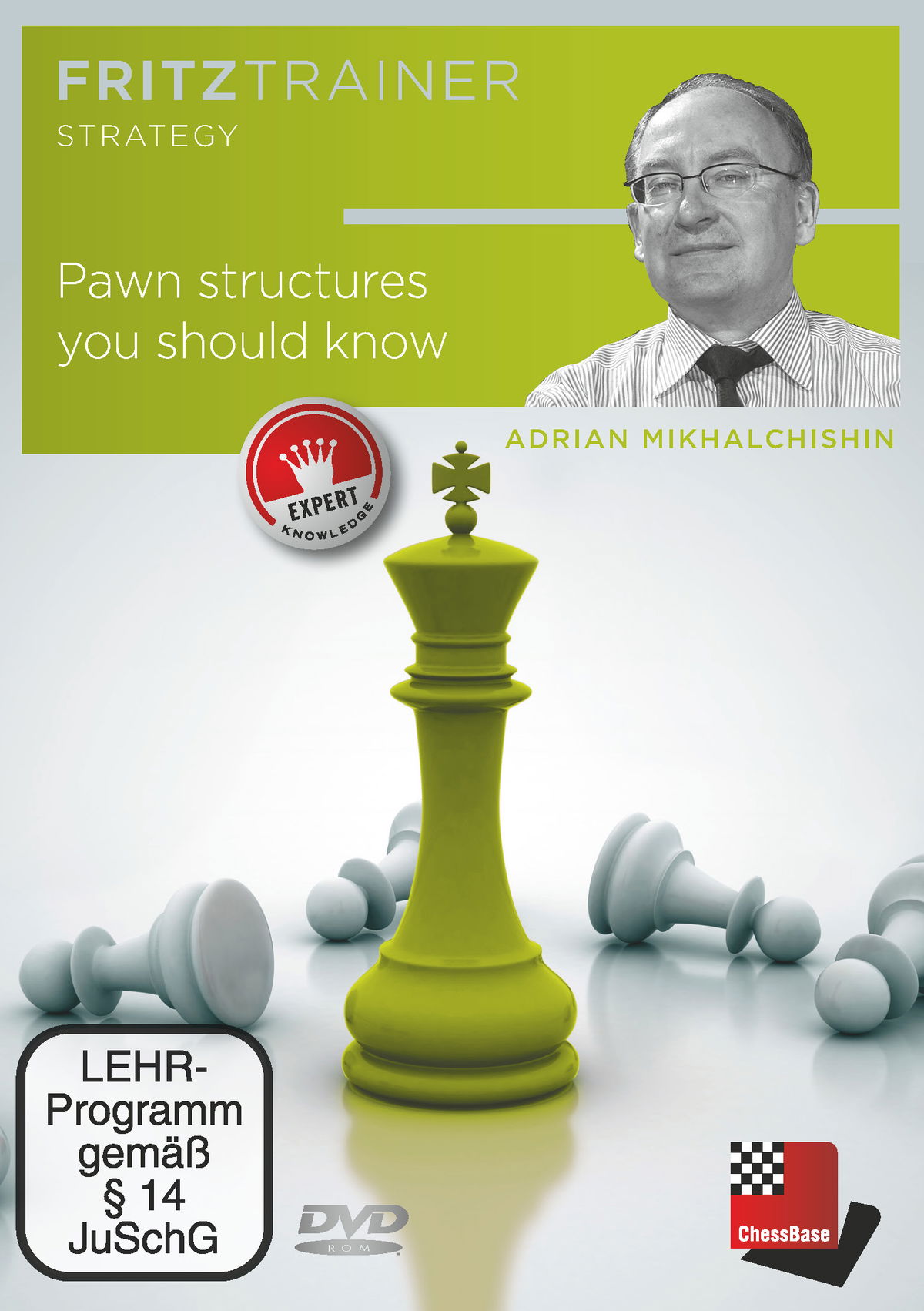

He is also a famous author, with many books published, too many to recount. When I say "famous trainer" I mean top of the chess world famous! He was one of Karpov's trainers in the period from 1980 to 1985 when Karpov was winning tournament after tournament! Then he trained Alexander Beliavsky in the period 1989-90.
I'd like to show some of his books, because Mikhalchishin is definitely the coach to learn from:


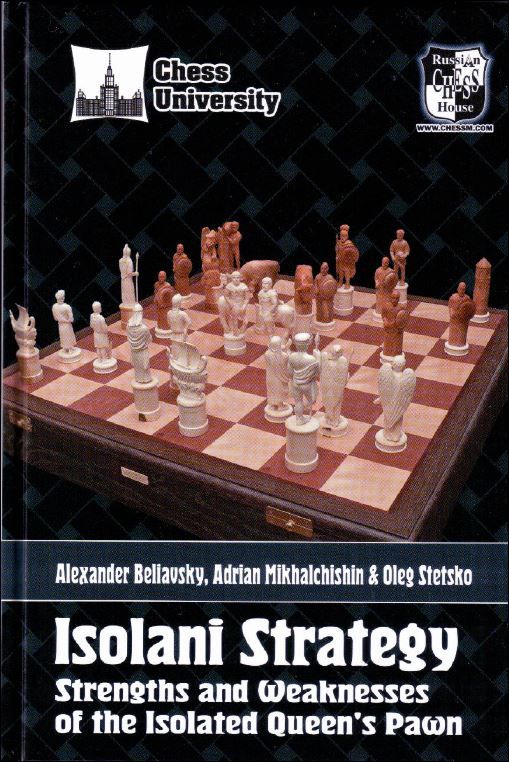
Mikhalchishin begins the DVD telling us the famous Tarrasch quote:
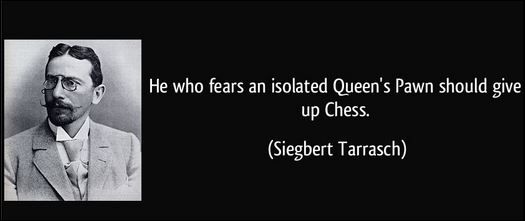
But the main idea behind this DVD is to give the tools to deal with four very important pawn structures, we all find in our games.
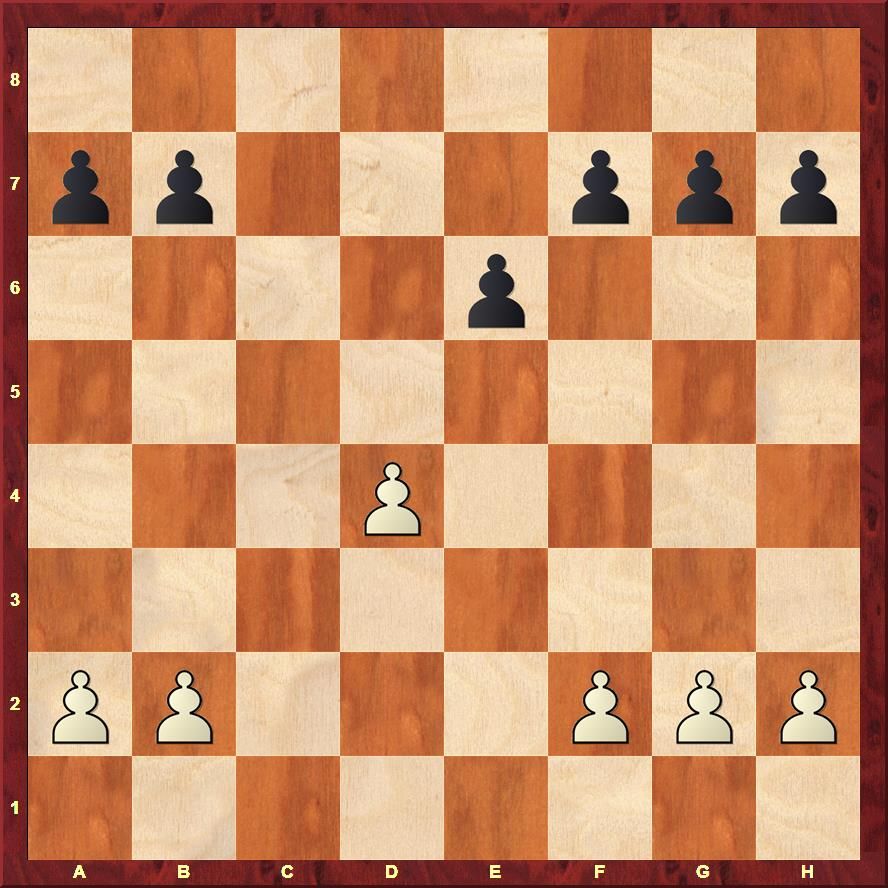
Isolani, which Mikhalchishin treats with 10 videos. And here we do need to learn chess history, and our classics, because through the classic games we will grow as players. In fact Chessbase released two DVDs, from different authors, which were pointing to such important concept for one's chess growth.

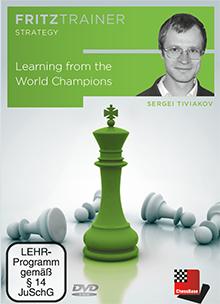 ...Learning from the World Champions by Sergey Tiviakov
...Learning from the World Champions by Sergey TiviakovWho was one of the first players to have the problem of the Isolani? Wilhelm Steinitz, the first world champion, had this problem in his match against Zukertort, and once more we see how the long gone past can help us in learning, through watching the ninth game of that match!

By the way this game has been commented by all the best players throughout history: Fine, Karpov, Kasparov, and of course Mikhalchishin. Clearly, it's a game that one needs to know.
[Site "USA"]
[Date "1886.02.10"]
[Round "9"]
[White "Zukertort, Johannes Hermann"]
[Black "Steinitz, William"]
[Result "0-1"]
[ECO "D26"]
[Annotator "ChessBase"]
[PlyCount "76"]
[EventDate "1886.01.11"]
[EventType "match"]
[EventRounds "20"]
[EventCountry "USA"]
[SourceTitle "MainBase"]
[Source "ChessBase"]
[SourceDate "1999.07.01"]
dxc4 5. e3 (5. e4 $1 Bb4 6. Bg5 $1 $16 {ECO D39}) 5... c5 6. Bxc4 cxd4 7. exd4
(7. Nxd4 $1) 7... Be7 8. O-O O-O {8...Nc6! D.Hooper vgl. Pillsbury-Steinitz St.
Petersburg 1895/96} 9. Qe2 Nbd7 10. Bb3 {10.d5=} Nb6 11. Bf4 (11. Rd1 $1 Nbd5
12. Bg5 Qa5 13. Rac1 $10) 11... Nbd5 12. Bg3 Qa5 13. Rac1 Bd7 14. Ne5 Rfd8 15.
Qf3 (15. Nxd7 Rxd7 {/\ Rad8}) 15... Be8 16. Rfe1 Rac8 17. Bh4 {/\ 18.Nd5 Nd5
(ed5) 19.Be7 Ne7 20.Qb7+/-} Nxc3 18. bxc3 Qc7 19. Qd3 $6 (19. Bg3 Bd6 20. c4
$13 {Lasker}) 19... Nd5 20. Bxe7 (20. Bg3 Qa5 $13) (20. Bc2 g6 21. Bxe7 Qxe7
22. Bb3 b5 $1 $15) 20... Qxe7 21. Bxd5 $2 {Zukertort believed the knight to be
superior since he now had the better game with his central pawn. Steinitz
refutes this. Zukertort glaubte, daß der Springer dem Läufer überlegen sei und
da er mit seinen Zentrumsbauern nun das bessere Spiel hat. Steinitz widerlegt
dies.} (21. c4 $5 Qg5 22. g3 Nf4 23. Qe4 $13) (21. Bc2 $5 Nf6 $2 22. Ng4 $40)
21... Rxd5 22. c4 Rdd8 23. Re3 $2 {White has a weak centre and should support
it. Any attack on the king here is doomed. 23.Red1 /\ Qb3, c5, Nc4, Nd6
Neistadt 23.d5?! b5!|^ Steinitz Weiß hat ein schwaches Zentrum und sollte es
stützen. Ein Königsangriff ist hier zum Scheitern verurteilt. 23.Red1 /\ Qb3,
c5, Nc4, Nd6 Neistadt 23.d5?! b5!|^ Steinitz} Qd6 24. Rd1 (24. Rh3 $2 h6 $1 (
24... Qxd4 $6 25. Qxh7+ Kf8 26. Re3 $13) 25. Rd1 f6 $17 {Neistadt}) 24... f6
25. Rh3 $5 (25. Nf3 Qa6 {25...Bh5! G.Barcza} 26. Nd2 (26. Qb3 Rxc4 27. Nd2
Rcxd4 28. Rxe6 Bf7 $17) 26... e5 27. d5 Qxa2 $17 {Euwe}) 25... h6 $1 (25...
fxe5 26. Qxh7+ Kf8 27. Rf3+ (27. Rg3 $5 Rd7 (27... Rc7 28. Qh8+ Ke7 29. Rxg7+
Bf7 30. Qh5 $10 {or 30.Qh4= oder 30.Qh4=}) (27... Bf7 28. Rxg7 Rc7 29. c5 (29.
Qh8+ Ke7 $10 {cf. the line with 27...Rc7 Schallopp vgl.Variante mit 27...Rc7
Schallopp}) 29... Qd7 (29... Qxc5 $2 30. Qh8+ Ke7 31. Qxd8+ $18) 30. Rd3 $3 (
30. Qh8+ Ke7 31. Qh4+ $10) 30... e4 31. Rdg3 $1 Qxd4 (31... Rxc5 32. Rg8+ Ke7
33. Qh4+ $18) 32. Qh8+ Ke7 33. Rxf7+ Kxf7 34. Qh7+ $18 {Ravinski}) 28. Qh8+ Ke7
29. Qh4+ Kf7 30. Qh7 $10) 27... Bf7 28. Qh5 Qd7 (28... Rd7 $2 29. Qh8+ $18) (
28... Rc7 29. c5 Qd5 {or 29...Qd7 oder 29...Qd7} 30. Qh8+ Ke7 31. Qh4+ $10 (31.
Qxg7 Rf8 32. h4 $13)) 29. Qh8+ Ke7 30. Qh4+ $10 {Steinitz} (30. Qxg7 Rf8 31. h4
(31. d5 Rxc4 $17) 31... Rxc4 32. h5 Rxd4 $17)) 26. Ng4 (26. Ng6 Bxg6 27. Qxg6
Rxc4 28. Rxh6 Qxd4 $1 29. Qh7+ Kf8 30. Qh8+ Kf7 31. Qxd8 Qxd8 $1 $19) 26... Qf4
$1 27. Ne3 (27. Rg3 b5 28. cxb5 Rxd4 $1 29. Nxh6+ Kf8 30. Qa3+ Qd6 $19 {
Steinitz}) 27... Ba4 $1 28. Rf3 (28. Rd2 $5 b5 29. Rf3 (29. cxb5 Rc1+ 30. Nd1 (
30. Nf1 Bxb5 $19 {or 30...e5 oder 30...e5}) 30... e5 $19 31. d5 Qb4) 29... Qb8
(29... bxc4 $2 30. Qa3) 30. cxb5 Rc1+ 31. Nd1 e5 $19 {/\ 32...Rd4 or e4 -+
Steinitz /\ 32...Rd4 oder e4 -+ Steinitz}) 28... Qd6 29. Rd2 (29. Rxf6 Bxd1 $1
$19 (29... gxf6 30. Qg6+ Kf8 31. Qxf6+ Ke8 32. Nf5 exf5 33. Re1+ Kd7 34. Qf7+
Kc6 35. Re6 $13 {(.)})) 29... Bc6 (29... b5 $1 30. Rg3 (30. cxb5 Rc1+ 31. Nf1 (
31. Nd1 Qxd4 32. Qxd4 Rxd4 33. Rxd4 Bxd1 $19) 31... Qb4 $19) 30... bxc4 31. Qg6
Qf8 32. Ng4 Kh8 33. Nxh6 Be8 $1 34. Nf7+ Qxf7 $19 {V.Vukovic}) 30. Rg3 (30.
Rxf6 $2 gxf6 31. Qg6+ Kf8 32. Qxf6+ Ke8 $19) (30. d5 $5 Qe5 $1 (30... exd5 31.
Nf5 $5 (31. cxd5 Bxd5 32. Nxd5 Qxd5 33. Qxd5+ Rxd5 $19 {Steinitz} 34. Rfd3 Rc1+
) 31... Qd7 $2 (31... Qe5 $2 32. Re3 Qa1+ 33. Rd1 $16) (31... Qf8 32. Rg3 Rd7
33. Nxh6+ Kh8 34. Ng4 f5 35. Ne5 Rd6 36. Rg5 $16) 32. Rg3 dxc4 33. Nxh6+ Kh8
34. Qg6 Re8 35. h4 {/\ Nf7 +- Euwe}) 31. Rg3 exd5 32. Qg6 Rc7 $17 {/\ 33...Be8
Euwe}) 30... f5 $1 $17 31. Rg6 Be4 32. Qb3 Kh7 $1 (32... f4 33. c5 fxe3 34.
cxd6 exd2 35. Qxe6+ Kh7 36. Rxh6+ gxh6 37. Qf7+ Kh8 38. Qf6+ Kg8 39. Qe6+ Kg7
40. Qe7+ $10) 33. c5 Rxc5 34. Rxe6 (34. Qxe6 Rc1+ 35. Nd1 (35. Nf1 Qxe6 36.
Rxe6 Bd5 37. Re7 Bc4 $19) 35... Qxe6 36. Rxe6 Bd5 37. Re1 Bxa2 38. Rxa2 Rxd4
$19 {Steinitz}) 34... Rc1+ 35. Nd1 (35. Nf1 Qf4 $1 $19) 35... Qf4 36. Qb2 Rb1
37. Qc3 Rc8 38. Rxe4 Qxe4 {Time: Zukertort:1h 55min Steinitz: 2h 12min Zeit:
Zukertort:1h 55min Steinitz: 2h 12min} 0-1

Hanging pawns, which Mikhalchishin treats with 7 videos, is quite important, because Adrian shows what the player with hanging pawns should do, and how the chess technique changed from Rubinstein's time, because nowadays there are some typical maneuvers one has to perform to stop the hanging pawns, and gain advantage.
[Site "Lodz"]
[Date "1908.??.??"]
[Round "?"]
[White "Rubinstein, Akiba"]
[Black "Salwe, Georg"]
[Result "1-0"]
[ECO "D33"]
[PlyCount "75"]
[EventDate "1908.??.??"]
[EventType "tourn"]
[EventRounds "16"]
[EventCountry "POL"]
[SourceTitle "EXT 2000"]
[Source "ChessBase"]
[SourceDate "1999.11.16"]
7. Bg2 {Already this mode of developing the Bishop is determined by the
weakness of Black on d5.} cxd4 8. Nxd4 Qb6 9. Nxc6 bxc6 10. O-O Be7 11. Na4 {
White concentrates on c5 and c6.} Qb5 12. Be3 O-O 13. Rc1 Bg4 {Black should
rather strenghthen c6 by Bd7.} 14. f3 Be6 15. Bc5 Rfe8 16. Rf2 Nd7 17. Bxe7
Rxe7 18. Qd4 Ree8 19. Bf1 Rec8 20. e3 Qb7 21. Nc5 Nxc5 22. Rxc5 {Now c5 is
gained and the Pawn at c6 fixed; that Pawn therefore becomes the target.} Rc7
23. Rfc2 Qb6 24. b4 {White threatens b5. Black has no time for 24...Bd7. The
sequence is 25.b5 Rac8 26.Qc3 and Black cannot liberate himself. Again if 24...
Bd7 25.b5 Rcc8 26.bxc6 Bxc6 27.Qc3.} a6 25. Ra5 Rb8 26. a3 Ra7 {Black cannot
guard all of his weak spots.} 27. Rxc6 Qxc6 28. Qxa7 Ra8 29. Qc5 Qb7 30. Kf2 {
The intent is to guard his own weaknesses, particularly on the second and
third ranks.} h5 31. Be2 g6 32. Qd6 {The c-file is important because open.} Qc8
33. Rc5 Qb7 34. h4 a5 {A desperate attempt at a counter-attack.} 35. Rc7 Qb8
36. b5 a4 37. b6 Ra5 38. b7 {This game illustrates how much greater weight the
effect of the pieces on weaknesses has in comparison to their effect on other
points.} 1-0
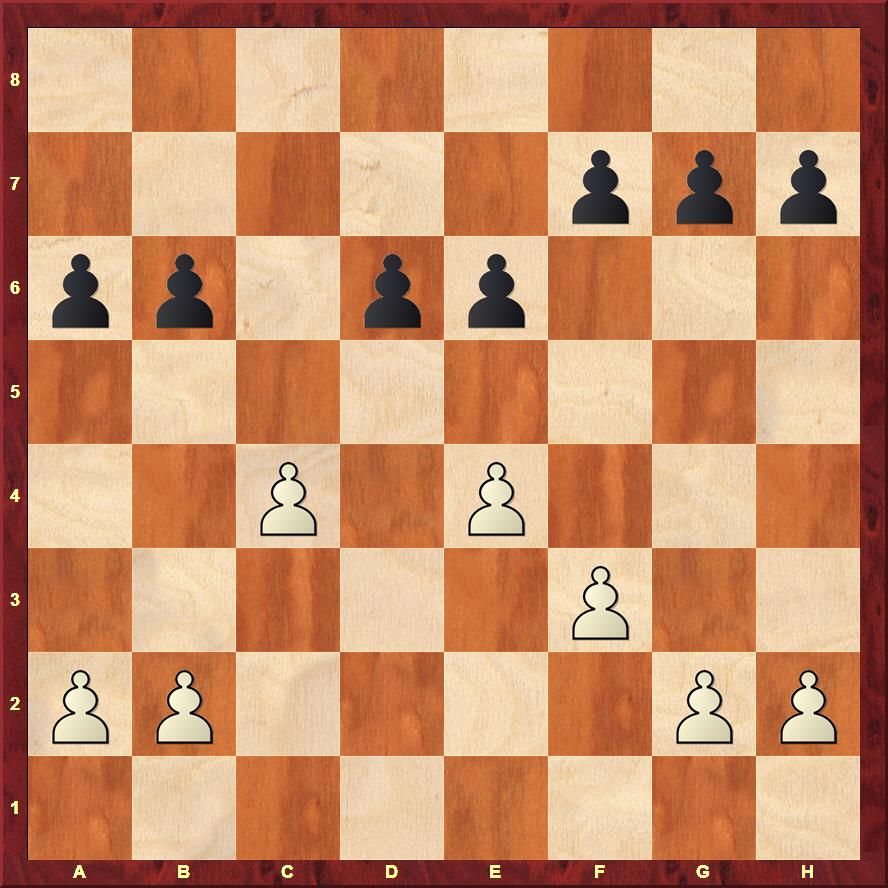
Hedgehog which Mikhalchishin treats with 11 videos, is quite an important formation, which has many books written upon it. This is an example on how to deal against Black's hedgehog formation!
[Site "Kislovodsk"]
[Date "1982.??.??"]
[Round "2"]
[White "Polugaevsky, Lev"]
[Black "Petrosian, Tigran V"]
[Result "1-0"]
[ECO "A17"]
[WhiteElo "2600"]
[BlackElo "2605"]
[PlyCount "53"]
[EventDate "1982.??.??"]
[EventType "team"]
[EventRounds "7"]
[EventCountry "URS"]
[SourceTitle "EXT 2002"]
[Source "ChessBase"]
[SourceDate "2001.11.25"]
Be7 9. O-O O-O 10. b3 a6 11. Bb2 Nc6 12. Nxc6 Bxc6 13. Qd3 {!} g6 14. a4 Qc7
15. f4 Rad8 16. Qe2 Rfe8 17. Rad1 Bb7 18. Kh1 Qc5 {?} 19. e5 {!} Nd7 20. Be4 {!
} Bc8 21. exd6 Bf8 22. Bf3 f5 23. b4 {!} Qxb4 24. Nd5 {!} Qc5 (24... exd5 25.
Bxd5+ $18) 25. Nc7 Nb8 (25... Bxd6 26. Nxe6 Qb4 (26... Nf8 27. Nxc5 Rxe2 28.
Bxe2) 27. Bd5) 26. Nxe8 Rxe8 27. Qd3 1-0

As you can see, not knowing how to handle the Maroczy can be quite deadly!
[Site "Moscow"]
[Date "1956.??.??"]
[Round "1"]
[White "Botvinnik, Mikhail"]
[Black "Golombek, Harry"]
[Result "1-0"]
[ECO "A30"]
[PlyCount "39"]
[EventDate "1956.09.02"]
[EventType "team-tourn"]
[EventRounds "11"]
[EventCountry "URS"]
[SourceTitle "MCD"]
[Source "ChessBase"]
[SourceDate "1999.07.01"]
[WhiteTeam "Soviet Union"]
[BlackTeam "England"]
[WhiteTeamCountry "URS"]
[BlackTeamCountry "ENG"]
cxd4 9. Nxd4 Bb7 10. Nc3 Qc8 11. Nc2 d6 12. e4 Nd7 13. Qd2 Nc5 14. f4 Ne6 15.
Rad1 Ned4 16. Nxd4 Nxd4 17. Nd5 Bxd5 18. cxd5 Nb5 19. Bxg7 Kxg7 20. Rc1 1-0
Now I'd like to give my impression about this DVD. Mikhalchishin goes at light speed through the videos, showing as many examples and maneuvers he can, and that is quite something. In fact I feel the DVD could have been titled: "Manoeuvers you need to know!" since I learned so much.
I always questioned myself in some games how I should proceed, and this DVD is a clear answer. Through Mikhalchishin coaching expertise I understood why one needs a coach in order to achieve the highest chess levels. This DVD is worth just for the selection of games. Those games show these amazing maneuvers that one must know, and make a second habit when playing. Often we are mislead to think we must study tactics, checkmates, but here lies the difference between an average amateur, and the master, the knowledge of these maneuvers.
The only defect I can find in the DVD is that Mikhalchishin makes them look simple, elementary, like everyone can perform them, and this shows his class. He's like an expert magician, which show us a trick, and we think it's easy, because he performed it flawlessly. But when we try to repeat it, we discover we'll need years to become that skillful! I'd like to show a position, which made me realize how lucky I was to have this DVD.
It comes from the game Dominguez Perez vs Moradiabadi, 2011. Black has just played 24...h6; can you guess what White's next move will be?
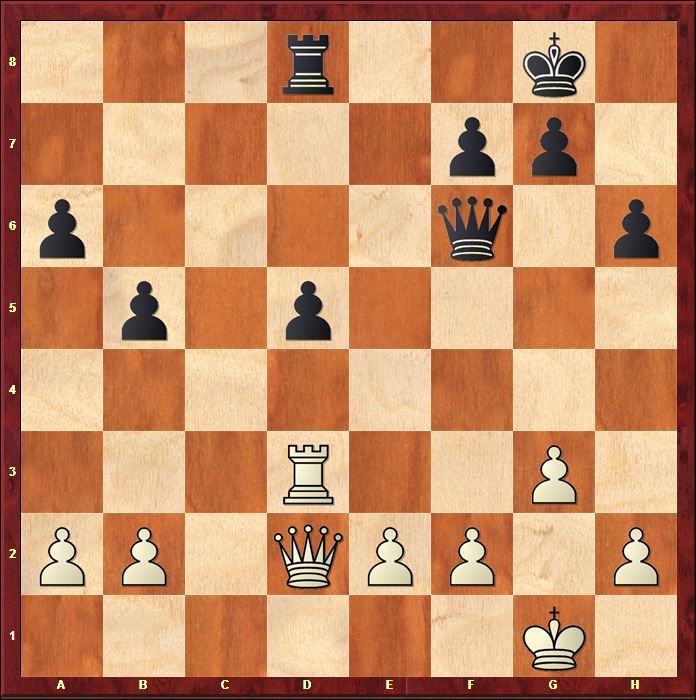
I will not spoil the surprise, but it was funny to notice how before seeing this video, I thought it could be a draw, and then learnt how dangerous such position could be, and how wrong my evaluation was.
The DVD ends with 8 video clips of tests, a way to check what one has understood and learned from the videos, plus a database of extra games, 78 in total, which one should study in order to improve the knowledge of these structures. The main database, on which the video lessons are based, is made by 81 games! I really like this DVD, and hope Mikhalchishin will release many more, to share his chess wisdom with us.
Buy Mikhalchishin's Pawn structures you should know for Rs.999/-
About the Author

Davide Nastasio is a novel chess aficionado, who has made of chess his spiritual tool of improvement, and self-discovery. One of his favorite quotes is from the great Paul Keres: "Nobody is born a master. The way to mastery leads to the desired goal only after long years of learning, of struggle, of rejoicing, and of disappointment..." He is one of the main writers for ChessCafe on Chessbase products, he authors articles on British Chess Magazine, and he is one of the main contributors of Georgia Chess Magazine in the new electronic format: Georgia Chess News. He is an active player, and organizes and directs chess tournaments.
